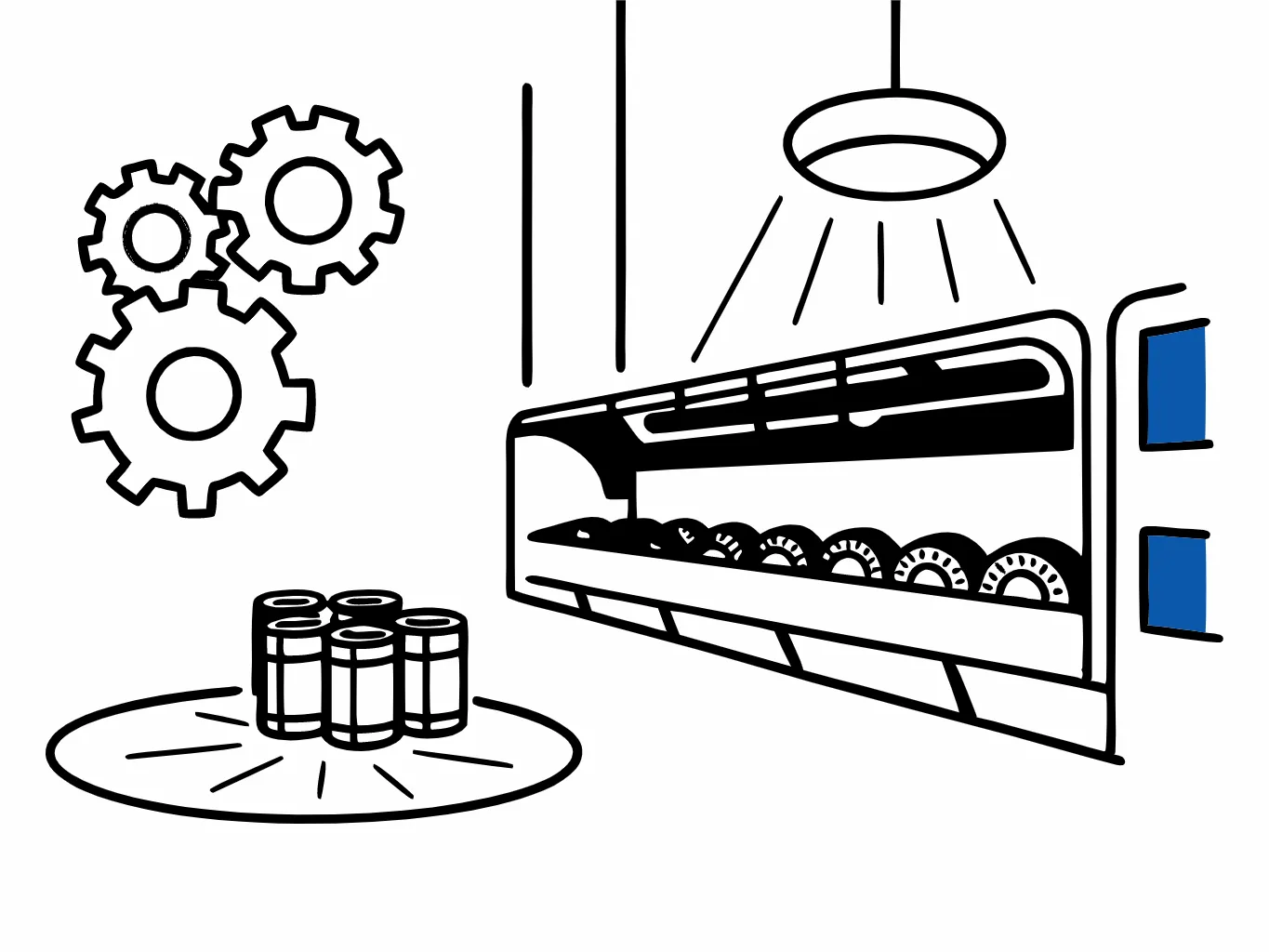PVC-genbrugsmaskiner er afgørende for at forvandle affaldsplastik til værdifuldt genbrugsmateriale. For at holde dem kørende effektivt og sikre en lang levetid er regelmæssig vedligeholdelse afgørende. Korrekt pleje kan også forhindre dyre reparationer, forbedre ydeevnen og minimere nedetiden. Her er en praktisk guide til vedligeholdelse af PVC-genbrugsmaskiner for maksimal holdbarhed.
1. Regelmæssig rengøring af komponenter
Rengøring er grundlaget for effektiv vedligeholdelse af PVC-genbrugsmaskiner. Over tid kan plastikrester, støv og snavs samle sig i maskinen, hvilket påvirker ydeevnen. Snavsede komponenter kan forårsage tilstopning, ujævn makulering og øget slid.
- Makuleringsblade: Efterse og rengør makuleringsbladene regelmæssigt for at forhindre ophobning. Brug luftkompressorer eller specialbørster til at fjerne snavs.
- Fodersystem: Rengør fodersystemet for at undgå blokeringer, der kan reducere gennemløbet og beskadige motoren.
- Kølesystem: Rengør kølesystemer regelmæssigt. Støv eller plastikpartikler kan tilstoppe køleribber og reducere effektiviteten, hvilket fører til overophedning.
Ved at holde komponenter rene sikrer du en mere jævn drift og reducerer belastningen på maskinen.
2. Smør bevægelige dele
Smøring spiller en afgørende rolle for at opretholde en jævn drift af PVC-genbrugsmaskiner. Korrekt smøring reducerer friktionen, forhindrer rust og forlænger levetiden af bevægelige dele.
- Lejer: Smør lejerne med få måneders mellemrum for at holde makulatorerne og andre bevægelige dele i funktion.
- Gear og motorer: Kontroller gearene og motorerne for smørebehov, især hvis din maskine bruges ofte. Manglende smøring kan føre til overophedning og slid.
Brug altid de anbefalede smøremidler specificeret af maskinproducenten for at undgå kompatibilitetsproblemer.
3. Overvåg og udskift slidte dele
Undersøg regelmæssigt din PVC-genbrugsmaskine for tegn på slid. Over tid kan dele såsom makuleringsblade, skærme og bælter opleve betydeligt slid på grund af kontinuerlig brug. Hvis disse komponenter ikke udskiftes til tiden, kan de føre til dårlig ydeevne og endda maskinfejl.
- Makuleringsblade: Tjek for tegn på sløvhed eller revner. Udskift knive, der ikke længere er effektive til at makulere PVC-materialet.
- Skærme og filtre: Efterse skærmene for slid. Beskadigede skærme kan kompromittere kvaliteten af outputtet og hindre effektiviteten.
- bælter: Tjek bælterne for tegn på revner eller flosser. Udslidte bælter kan forårsage mekanisk fejl og føre til uventet nedetid.
Brug af slidte dele kan øge energiforbruget og reducere produktiviteten. Udskiftning af disse komponenter, før de fejler, hjælper med at opretholde maskinens effektivitet.
4. Kontroller og kalibrer sensorer og kontroller
De fleste moderne PVC-genbrugsmaskiner kommer med sensorer og elektroniske kontroller, der hjælper med at styre driften. Regelmæssige kontroller og kalibreringer sikrer, at disse systemer fungerer korrekt.
- Sensorer: Sørg for, at materialesensorer, temperatursensorer og tryksensorer er rene og kalibrerede. Fejlkalibrerede sensorer kan føre til forkerte aflæsninger, hvilket påvirker kvaliteten af det genbrugte materiale og den overordnede effektivitet af operationen.
- Kontrolpanel: Hold kontrolpanelet fri for støv og fugt. Et rent og korrekt fungerende kontrolsystem er nøglen til problemfri drift.
Regelmæssig sensorkalibrering er især vigtig for at sikre, at maskinen fungerer under optimale forhold, hvilket forhindrer skader på både udstyret og det materiale, der genbruges.
5. Udfør systematiske inspektioner
Rutinemæssige inspektioner er afgørende for at identificere potentielle problemer, før de fører til dyre nedbrud. Planlæg regelmæssige kontroller for at sikre, at alle komponenter fungerer som forventet.
- Tjek for løse dele: Sørg for, at alle møtrikker, bolte og skruer er spændt. Løse dele kan føre til vibrationer og belastning af andre komponenter, hvilket reducerer maskinens levetid.
- Hydrauliske og pneumatiske systemer: Tjek for lækager og sørg for, at hydrauliske og pneumatiske systemer fungerer korrekt. Utætheder kan forårsage trykproblemer, hvilket reducerer maskinens samlede ydeevne.
Rettidig inspektion hjælper med at identificere mindre problemer, før de bliver til store problemer, hvilket sparer både tid og penge.
6. Optimer materialefodring
At tilføre den rigtige type og mængde materiale i PVC-genbrugsmaskinen er afgørende for dens levetid. Indføring af for meget materiale på én gang kan overbelaste systemet, hvilket kan føre til slid og potentiel skade.
- Undgå overbelastning: Indfør materialet i små, håndterbare mængder for at undgå at stresse maskinen.
- Sorter materiale: Sørg for, at PVC-materiale er sorteret korrekt for at forhindre forurening og beskadigelse af indvendige dele.
Korrekt fodring sikrer, at maskinen fungerer effektivt, hvilket reducerer sandsynligheden for funktionsfejl eller unødvendigt slid.
7. Udfør forebyggende vedligeholdelse med professionel hjælp
Mens daglige vedligeholdelsesopgaver kan udføres internt, bør forebyggende vedligeholdelse udføres af fagfolk med jævne mellemrum. Professionelle vedligeholdelsesteknikere kan inspicere dele, der er svære at få adgang til, og sikre, at alt fungerer optimalt.
Ved at planlægge årlige eller halvårlige eftersyn kan du opdage problemer tidligt og sikre, at maskinen kører med den højeste ydeevne året rundt.
Konklusion
Vedligeholdelse af PVC-genbrugsmaskiner involverer en blanding af daglig pleje, regelmæssige inspektioner og professionel support. Ved at holde komponenter rene, smøre bevægelige dele og overvåge maskinens ydeevne kan du forlænge dit udstyrs levetid betydeligt. Proaktiv vedligeholdelse hjælper ikke kun med at undgå dyre reparationer, men forbedrer også den samlede effektivitet og produktivitet.
For mere dybdegående indsigt i optimering af genbrugsoperationer, besøg Energycles stive plastvaskelinje til PP, HDPE, PVC, som kan komplementere din PVC-genbrugsproces og sikre, at du opnår den højeste kvalitet.
Vedligeholdelse af PVC-genbrugsmaskiner er afgørende for operationel succes. Implementer disse tips for at forlænge dit udstyrs holdbarhed og effektivitet.



